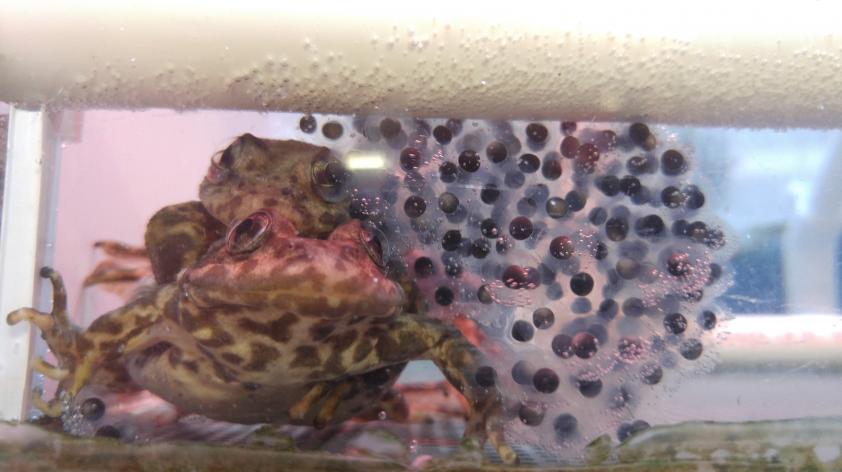
How We Like Our Eggs
We don’t put all of our eggs in one basket, but we do count our eggs before they hatch!
2016 marks the 10th year that the mountain yellow-legged frog recovery program has been operating at the San Diego Zoo Institute for Conservation Research and it is one of our most productive breeding years yet.
Between April and May 2016, seventeen captive females laid clutches for a total of over 7,600 eggs. Of the eggs laid, 27% of them were fertilized bringing us to a little over 2,000 developing embryos!
The eggs themselves are reminiscent of the tapioca balls found in boba tea. Each egg is encased in transparent, sticky, gelatinous goo known as “egg jelly.” This protective outer layer enables the eggs to stay clumped together and stick to various surfaces and substrates in the frog’s environment.
Often, right before the female lays her eggs she will “handstand.” This orientation allows her to deposit/stick her egg masses to the underside of rock ledges, branches and leaves.
Approximately 12-24 hours after the eggs are laid, we can examine them under the microscope and begin sorting the eggs into 3 categories: dead, unfertilized and fertilized.
Dead eggs are typically dark with white marbling or gray and cloudy, which make them easy to differentiate from healthy eggs. We don’t want a few bad eggs to spoil the bunch, so if any eggs are identified as dead, they are counted and removed from the egg clutch.
If the eggs are fertilized we can see the cells start to divide within 24 hours. The rate of cell division changes with water temperature, thus eggs from amphibian species that live in warmer waters show cell division sooner than mountain yellow-legged frogs. With our eggs kept at 48°F, similar to conditions in the wild, the cell division process takes some time to observe.
We were surprised to see that some of our 2-3 year old frogs produced egg clutches this year! This was especially exciting since we did not expect them to be reproductive for at least 1 to 2 more years.
There is a noticeable size difference between eggs laid by younger and older female frogs.
In one month’s time, we should begin to see the emergence of tadpoles. Some of these tadpoles will be reintroduced to the wild in mid-June and some will be held back and head started at our facility until they have morphed into small frogs (froglets), which will then be released in 2017.













